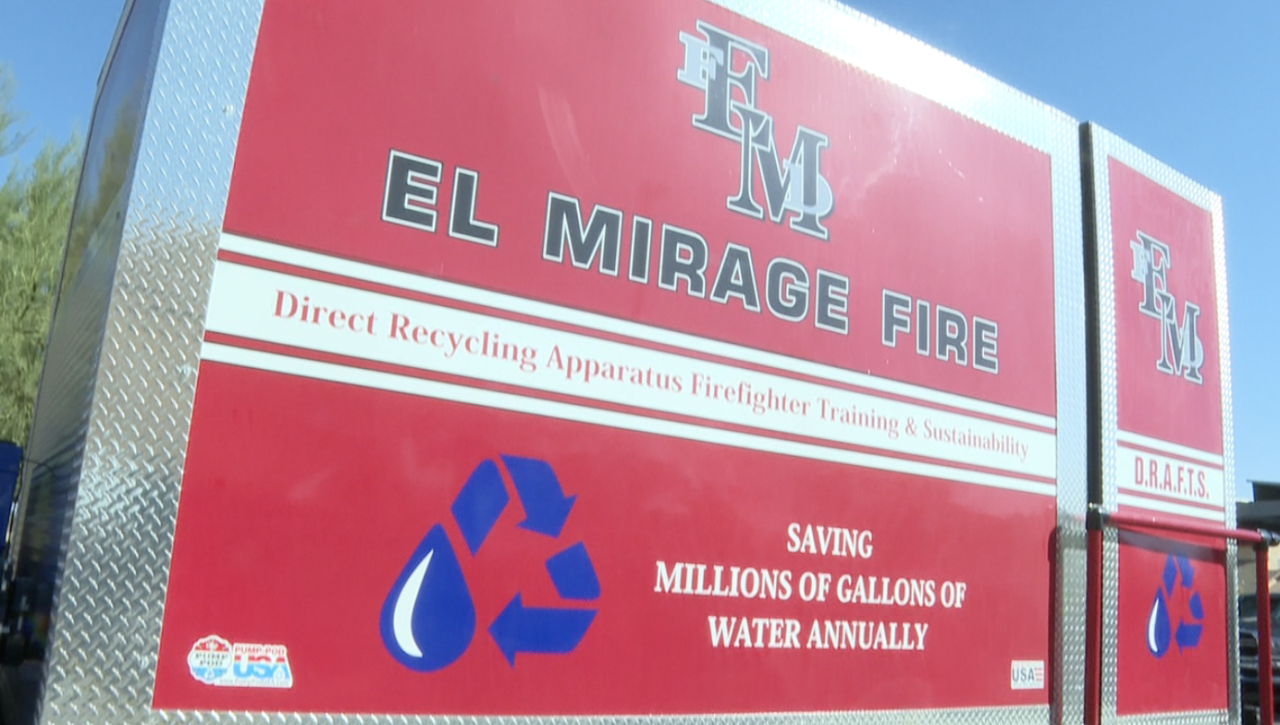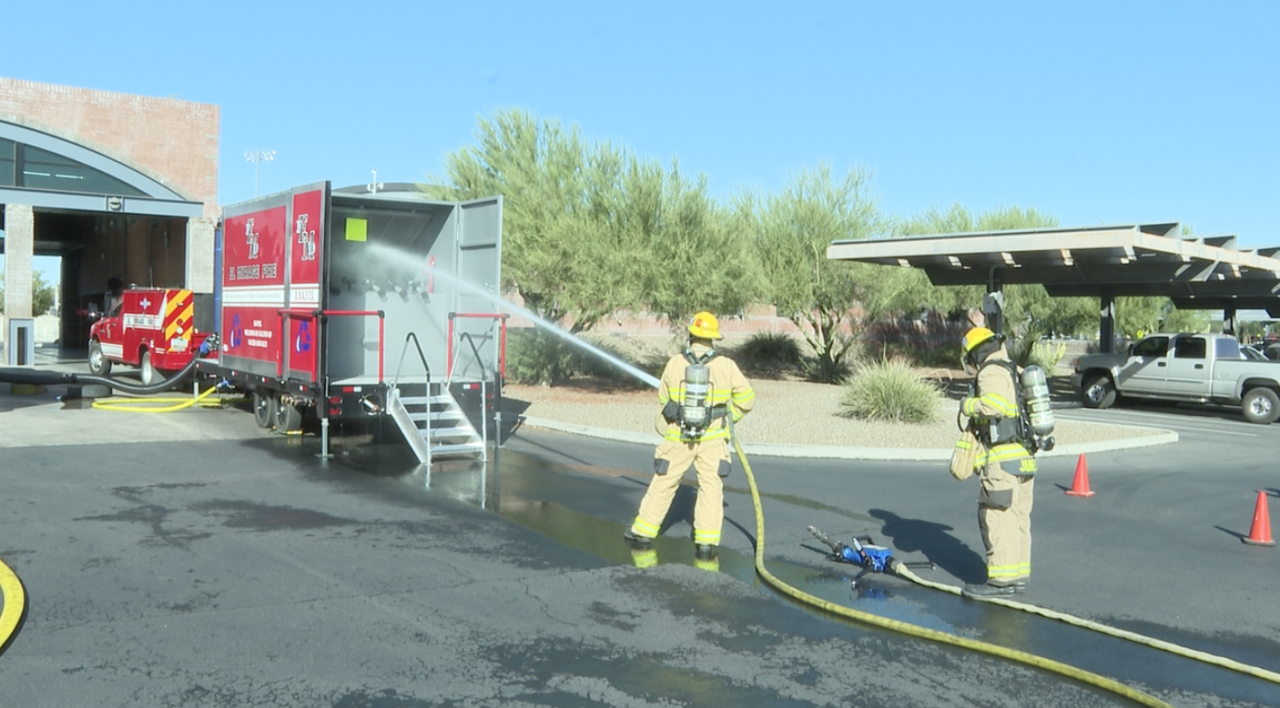EL MIRAGE, AZ — More than 100 gallons of water comes out of a fire hose each minute, and firefighters need to train with one of their most effective tools for putting out dangerous fires.
Even though the practice is essential, the El Mirage Fire Department says it didn't feel right to use so much water in the desert for non-emergencies.
"We tried to be mindful and spray in a park or by some trees, and not just waste it in a parking lot," Battalion Chief Joe Fusco said.
That's where the "D.R.A.F.T.S" trailer comes in. The acronym stands for "Direct Recycling Apparatus Firefighter Training & Sustainability."

El Mirage firefighters aim at a yellow square inside the trailer to practice spraying with the different hoses. The water collects in a tank and goes back through the truck and out the hose again.
"The truck is essentially acting as a pump, but it’s also pushing the water back out," Fusco said.

Do you have a concern in your community or a news tip? We want to hear from you!
Connect with us: share@abc15.com
The trailer isn’t cheap. It costs around $100,000, which is difficult for departments to afford on their own.
That’s where the Water Infrastructure Finance Authority (WIFA) stepped in to help.
"WIFA is essentially a bank," Chelsea McGuire said. "We’re a state agency that takes public money and invests in water infrastructure projects.”
The El Mirage Fire Department applied for money to buy the D.R.A.F.T.S trailer and was accepted. McGuire says the WIFA board felt it was important to fund water projects in public safety, as they're not always top of mind for water conservation areas.
"What we don’t realize is how essential water is to public safety in our lives, like putting fires out," McGuire said.

She says it's a two-for-one investment: saving millions of gallons of water and continuing life-saving training guilt-free.
“They don’t have to choose between public safety and water conservation. They can do both at the same time," McGuire said.
WIFA invested $200 million into projects like the one in El Mirage all across Arizona. McGuire says they expect all of them to be implemented by 2026, potentially saving the state hundreds of millions of gallons of water.




